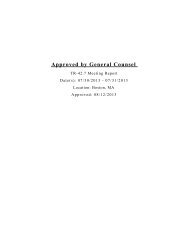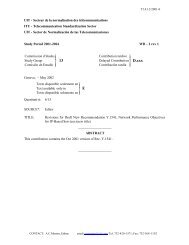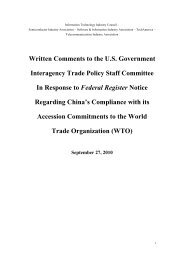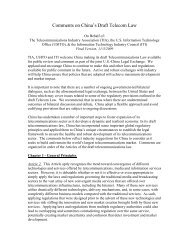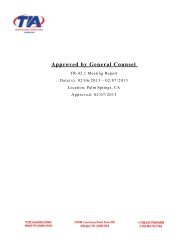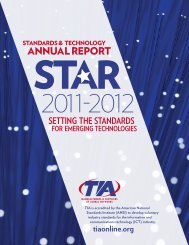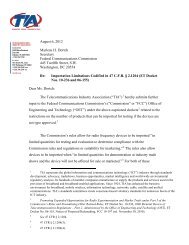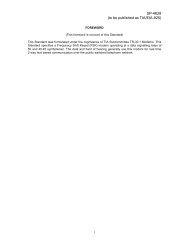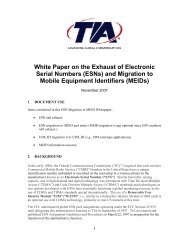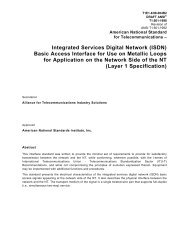ITU-T V.150.1
ITU-T V.150.1
ITU-T V.150.1
- No tags were found...
You also want an ePaper? Increase the reach of your titles
YUMPU automatically turns print PDFs into web optimized ePapers that Google loves.
For the error controlled and asymmetric non-error controlled configurations, Raw octet compressed<br />
may not be used; the only choice from the mandatory set is octet without format. For symmetric<br />
non-error corrected configurations, both octet without formatting and Raw octet compressed may<br />
be chosen. If the configuration is symmetric non-error controlled octet without format is treated as<br />
an optional data type in the data type selection procedures.<br />
14.5.1 Octet without formatting<br />
This data type may be used for Error Controlled Data or character data mode. When used in<br />
character data mode, it shall not include start-stop bits. This data type may include DLCI. The use<br />
of the DLCI is indicated by a code-point in the IP-TLP CONNECT message.<br />
14.5.2 Raw Octet Compressed<br />
This data type has application with synchronous data streams. This Raw data type shall preserve all<br />
bits received from the DCE interface. The amount of data exchanged may be reduced by use of<br />
simple compression. Repeated octet patterns are coded and removed by the transmitter from the<br />
data stream. The receiver decodes the stream and restores it to original form.<br />
14.6 Optional Modem Relay Data Types<br />
Gateways shall indicate the capability and support of their receivers for the optional data types<br />
defined in this Recommendation. Gateway packet transmitters shall not use an optional data type if<br />
the peer Gateway receiver does not support it and there is no obligation of the transmitter of an<br />
optional data types to use a capability indicated by a receiver.<br />
14.6.1 Character with formatting Data Type<br />
This data type allows for the transport of Start-Stop characters of different formats. The characters<br />
are transmitted unpacked (i.e. one character per octet, one octet per character. This data type shall<br />
use the same format rules as defined in Annex B/V.42. The mandatory Start-Stop character<br />
capabilities a Gateway shall support are Data plus Parity shall equals eight bits and one stop-bit.<br />
There are two forms of this data type; both are indicated as separate options. The first allows for the<br />
changing of character format during a MR session and the second does not. Each type has a unique<br />
message ID.<br />
14.6.2 Raw bit compressed Data Type<br />
This data type is used in the same application as the Raw octet compressed type. This format codes<br />
and decodes N-bit repeated patterns. N may have the value of 8.<br />
14.6.3 Framed Data Type<br />
This optional data type is for use by a pair of consenting Gateways if a Gateway is able to<br />
determine that the data format is Framed data consistent with ISO/IEC 3309 and 4335. If this data<br />
type is selected by the Gateways, it may transmit the data with the framing elements removed.<br />
These elements if removed shall be replaced by the receiver such that the data remains consistent<br />
with ISO/IEC 3309 and 4335. The means and method by which a Gateway determines the data type<br />
is beyond the scope of this Recommendation.<br />
This data type shall not be used when either or both Gateways have negotiated V.42 or Annex A/<br />
V.42 (1996).<br />
<strong>ITU</strong>-T Rec. <strong>V.150.1</strong> (01/2003) – Prepublished version 24



